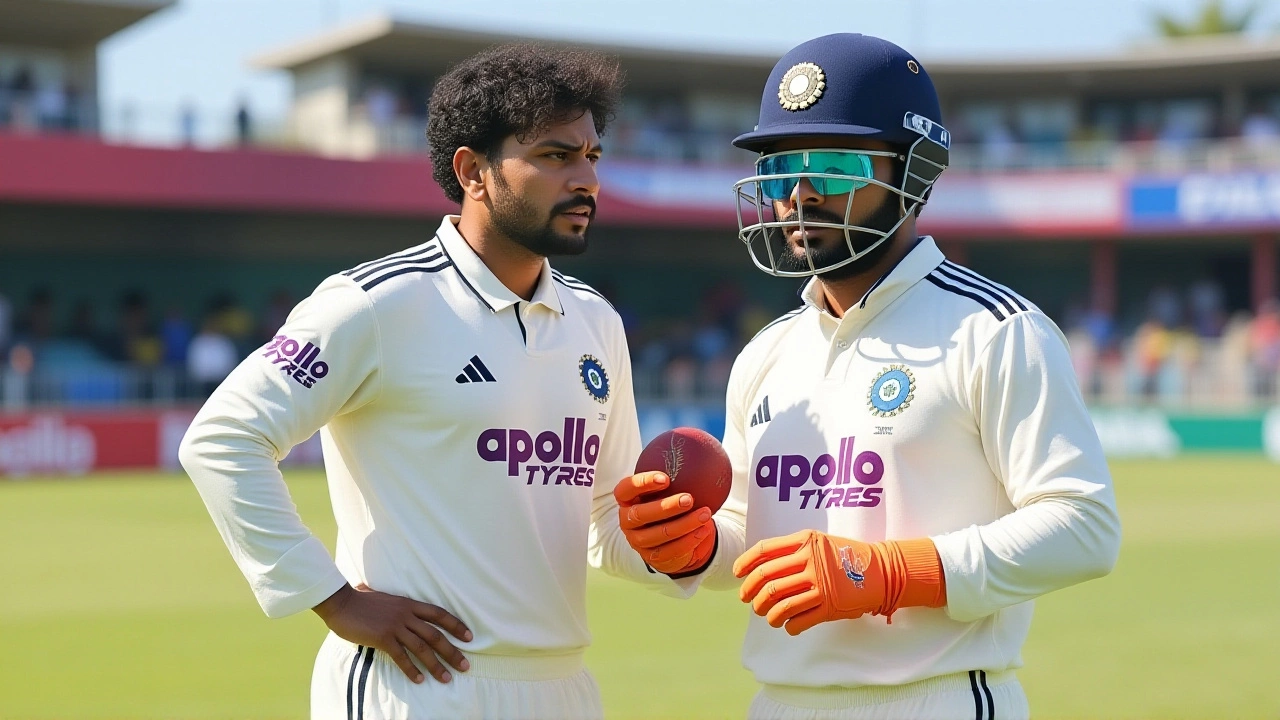
On a rain-slicked morning at Kingsmead Cricket Ground in Durban, the sound of leather on willow was replaced by the sharp crack of stumps flying — and then, silence. Marco Jansen, the 6-foot-9 South African left-arm pacer, didn’t just bowl well on November 24, 2024. He dismantled an entire Test team in 6.5 overs. His spell of 7 for 13 in just 33 balls didn’t just break records — it rewrote the history of Sri Lankan cricket, reducing them to Sri Lanka national cricket team’s lowest-ever Test score: 42 all out.
The Collapse That Shook Test Cricket
It took just 83 balls — 13.5 overs — for Sri Lanka to be bowled out. Five batsmen, including captain Dinesh Chandimal and vice-captain Kusal Mendis, were out for zero. The innings lasted less time than most coffee breaks. The only thing faster? South Africa’s own 30 all out against England at Lord’s in 1924. This wasn’t just a collapse. It was a massacre. Jansen didn’t just take wickets. He terrorized. Three batsmen were bowled clean out. One was caught-and-bowled. Three more were snatched by slips — first, second, third — like ducks in a shooting gallery. His length? Unplayable. Not full, not short. Just... there. The kind of delivery that makes you wonder if the ball has a mind of its own. One ball, according to commentary, flicked the pad and snuck through to leg stump. No one saw it coming.Why Kingsmead Became a Death Trap
The pitch wasn’t always like this. Day one had been washed out by rain, leaving the surface damp, uneven, and alive with movement. South Africa’s seamers — Jansen, Gerald Coetzee, and Kagiso Rabada — didn’t just adapt. They weaponized it. The ball swung. It seamed. It jumped. Sri Lanka’s batsmen, many of whom hadn’t faced conditions like this in years, looked like schoolboys facing a bowling machine. Kamindu Mendis, the lone bright spot with 13, was the only one to reach double figures. Everyone else? Gone. Before lunch. Before they’d even settled in. The lack of partnership was staggering — the highest stand was just 11 runs. No one lasted more than 12 balls.A Record-Breaking Performance
Jansen’s 7 for 13 tied the record for the fastest seven-wicket haul in Test history — matching Australian legend Hugh Trumble’s 1904 spell against England. It’s the best bowling figures by a South African pacer at home in the modern era. And the best by any South African bowler in the 21st century. It also made South Africa the country with the most sub-50 Test totals against touring sides since 2000 — four now, including this one. Sri Lanka’s 42 was the lowest in 100 years. The last time a team scored lower? South Africa’s 30 at Lord’s, a century ago. The impact was immediate. Sri Lanka Cricket’s website reported South Africa led by 281 runs with seven wickets left in their second innings. Other outlets, like Hindustan Times, cited a 149-run lead — a discrepancy that speaks to the chaos of the innings. Either way, South Africa held all the cards.Voices From the Dust
On social media, South African batsman Rassie van der Dussen, who hasn’t played a Test since 2022, dropped a line that went viral: “South Africa is the toughest place to bat in Test cricket. Change my mind.” It wasn’t just the score. It was the manner. The silence after each wicket. The way Sri Lanka’s players stared into the middle, as if waiting for the ground to swallow them. Even veteran commentators compared it to Mohammed Siraj’s 2023 demolition of Sri Lanka — but this was worse. More complete. More brutal. Jansen, who had been a promising talent but inconsistent, became an overnight phenomenon. Indian Express called him “a menacing, unplayable beast when at his best.” But they also noted: “He may not have channelled the consistency factor yet.” That’s the scary part. If he does? This might just be the beginning.
What Comes Next?
With seven wickets still standing in their second innings, South Africa is poised to win this Test by an innings — and possibly sweep the series. For Sri Lanka, the questions are existential. Can their batting lineup recover? Will they need to rethink their entire approach to overseas tours? And why, in an era of high-scoring Tests, do visiting teams keep crumbling in South Africa? The answer might lie in the conditions — and the mindset. South Africa doesn’t just bowl fast here. They bowl with purpose. With aggression. With the understanding that this pitch, this climate, this atmosphere — it’s theirs. And no one else belongs.Historical Context: The Rarest of Low Scores
Test cricket has changed. Batsmen are better. Pitches are friendlier. Records are harder to break. That’s why 42 stands out. It’s not just low — it’s an artifact. The last time a team scored under 50 in a Test? England’s 45 against Australia in 2018. Before that? South Africa’s 30 in 1924. This wasn’t just a bad day. It was a moment frozen in time. For Sri Lanka, this is their 312th Test match. And this? This is their lowest. Ever.Frequently Asked Questions
How does Marco Jansen’s 7/13 compare to other legendary bowling performances in Test cricket?
Jansen’s 7 for 13 in 6.5 overs ties the record for the fastest seven-wicket haul in Test history, matching Hugh Trumble’s 1904 feat. Only five bowlers in the last 120 years have taken seven wickets in under seven overs. His figures are the best by a South African in the 21st century and rank among the top five most economical seven-wicket hauls ever, with an average of just 1.85 runs per over.
Why was the Kingsmead pitch so difficult for Sri Lankan batsmen?
After rain on Day 1, the pitch retained moisture, offering significant swing and seam movement. South African bowlers exploited the uneven bounce and lateral movement with precision. Sri Lanka’s batsmen, unused to such conditions, struggled to judge length — and were often caught between playing and leaving. The ball didn’t just move off the seam; it seemed to change direction mid-air.
What’s the significance of Sri Lanka’s 42 being their lowest Test score?
Sri Lanka’s previous lowest was 71 against Pakistan in 1994. This 42 all out — their 312th Test — represents a historic low point. It’s the lowest score by any team in a Test match since 2018, and the lowest by a visiting side in South Africa since 1998. For a team that once boasted world-class batting, this collapse signals deep technical and mental flaws under pressure.
How often do teams get bowled out for under 50 in modern Test cricket?
Since 2000, only 12 Test innings have ended under 50. South Africa has been responsible for four of them — more than any other nation. The last time it happened was in 2018, when England were bowled out for 45 by Australia. These collapses are rare — making Sri Lanka’s 42 all the more shocking in today’s batting-dominated era.
What does this mean for South Africa’s chances in the series?
With a lead of over 280 runs and seven wickets in hand, South Africa is heavily favored to win the first Test by an innings. If they follow up with a strong batting performance, they could clinch the series with a game to spare. This performance has shifted momentum entirely — and exposed Sri Lanka’s vulnerabilities in away conditions.
Could Marco Jansen become a dominant force in Test cricket after this performance?
This was Jansen’s breakout moment. At 25, he now has the most impactful spell of his career. While he’s shown inconsistency in the past, this performance proves he can dominate on his day. If he can replicate this intensity in other conditions — especially overseas — he could become South Africa’s premier pace weapon for the next decade.
